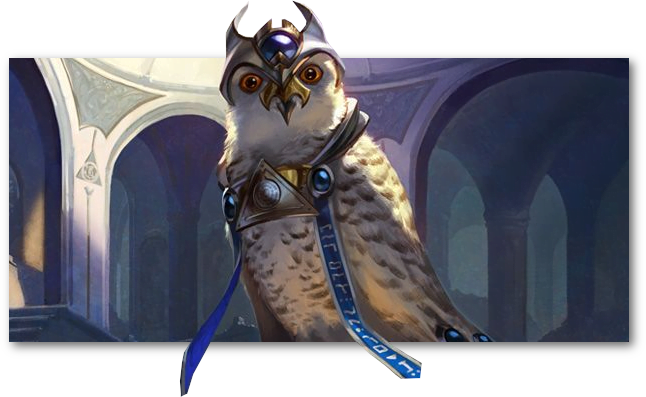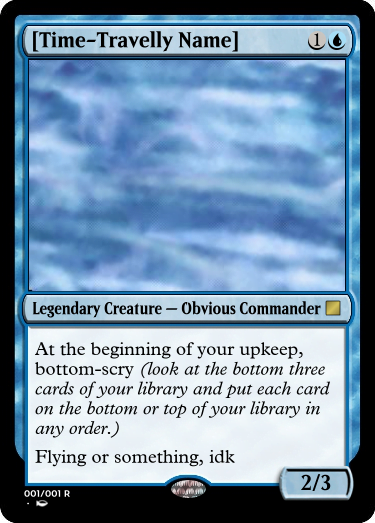WOTC Employees: This article includes unsolicited game designs. Here’s an owl so it doesn’t show up on the twitter preview.

This should be quick.
Amateur designers make a lot of mistakes. It’s okay, we’re amateurs. We’re not meant to be good at this game, we’re meant to be having fun. There are some things though that amateur designers make so consistantly I feel that it’s worthwhile pointing it out. If you want an example, check out the Pack Rat problem I outlined, where an amateur design creates a stagnant game state.
There’s other kinds of bad amateur design. One constant issue I see is the way amateur designers keep putting free information cards out there, things like making your opponents play with their hands revealed, or let you look at the top card of your library very cheaply. Another problem is fake split cards, where you design a card that’s trying to be two different cards at once, and maybe I’ll go into those and why they’re a design. But this time I’d like to talk about an area of design space that amateurs keep going to, and keep ignoring why they shouldn’t.
Periodically, you’ll see some MTG design like this:

The bottom of your library is a place that broadly speaking, you shouldn’t want to pay attention to. It’s a place that game actions put things so you can ignore them. Cards that check the bottom of your library are all done to make sure that that information is as close to random as possible – Grenzo, Dungeon Warden, for example, is digging out of the bottom of your library because it’s meant to be random.
In City Talk – and numerous other places, but that one article is the nearest one to memory – Mark Rosewater offers this description of why you put things on the bottom of your library in a random order:
The rest of the cards go on the bottom of the library in a random order instead of a chosen order because our rule is to make it random whenever there’s a chance that you’ll be putting three or more cards there. The thought behind this rule is that we don’t want players spending time making decisions that won’t ever matter in the vast majority of games.
The problem is, this wants to open up the bottom of your library. It’s an effect that means you now care about what’s on the bottom of your library, and therefore, all actions you make during that game, for optimal play, want to bear in mind how things relate to the bottom of your library. This pushes cognitive load – working out what’s left in a library is already a challenge that players have to bear in mind. You can’t put things into exile like this – that’s a removal effect that implies they’re gone forever. You can’t put them in the graveyard, that’s where they’re usually coming from. The bottom of the library is the easiest way the game can say gone but not forgotten.
Leave the bottom of the library alone. It’s hard to interact with for a reason.